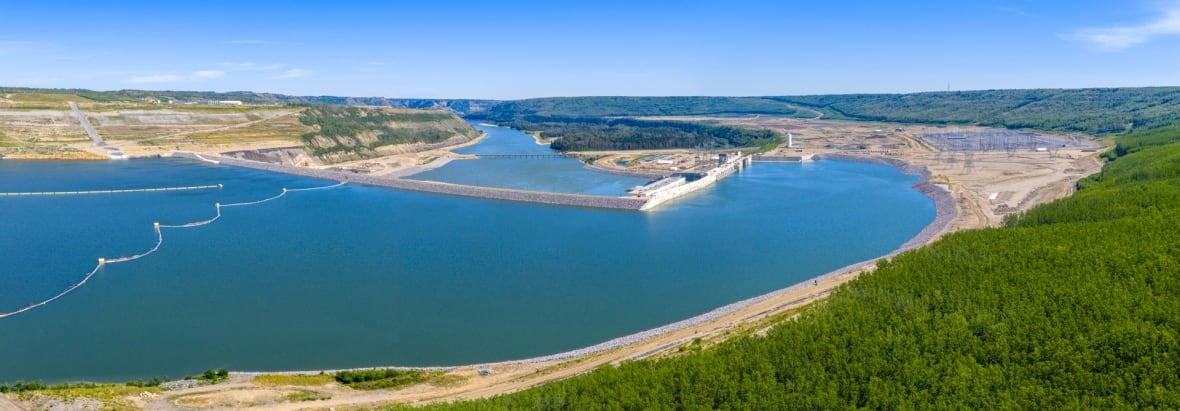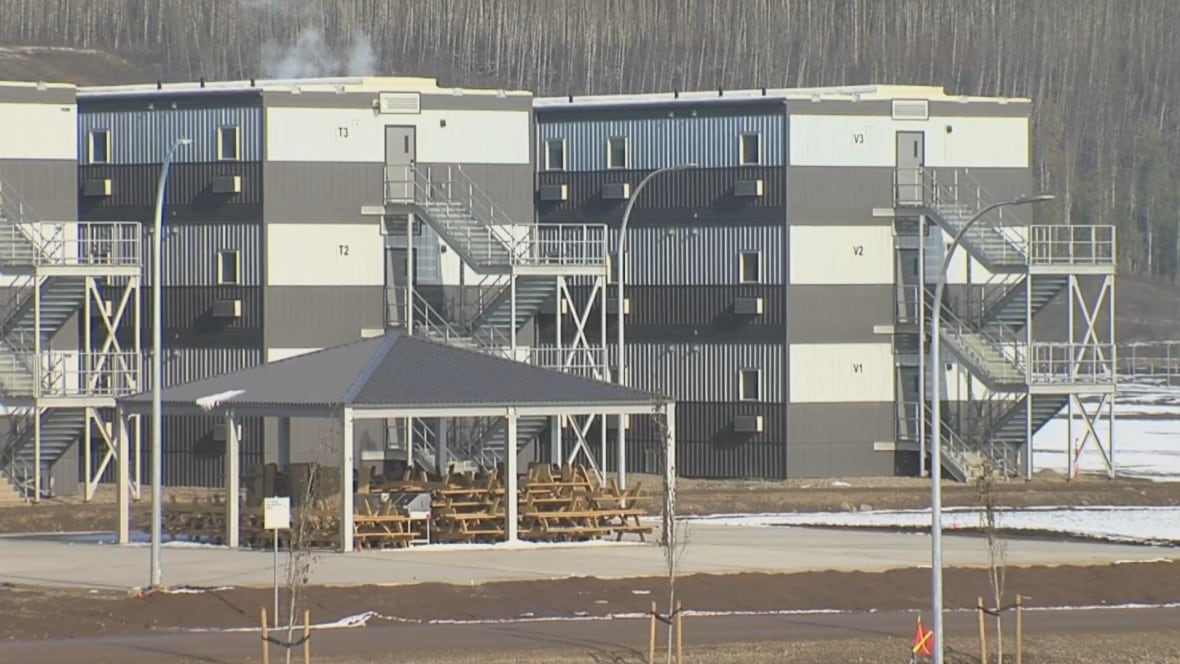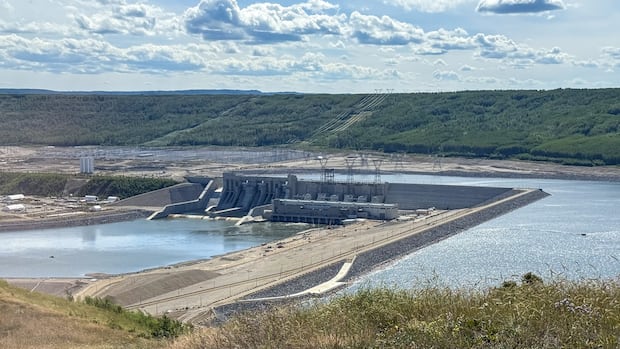Communities in northeast B.C. say the province and B.C. Hydro need to deliver more benefits from the Site C dam now that the $16-billion megaproject is able to produce more electricity than first projected.
The newly commissioned dam will be able to generate up to 1,230 megawatts at peak capacity, about 130 megawatts more than the 1,100 originally approved in 2014.
That’s enough to power roughly 52,000 more homes than initial estimates, or more than half the expected energy needs of the proposed Cedar LNG project in Kitimat.
“If the benefit of Site C, in terms of its ability to produce revenue, is increased, then the impact to us and the recognition of that impact should also be incorporated,” said Hudson’s Hope Mayor Travous Quibell.
The increase was discovered as B.C. Hydro tested Site C’s six massive turbines, built in Brazil and brought online over the past year on the Peace River outside Fort St. John. The last unit went into operation in August, months ahead of schedule, while provincial regulators quietly amended Site C’s environmental certification this spring to recognize its higher output.
“As you get into the commissioning process, you find out what you’ve actually got,” said B.C. Hydro spokesperson Greg Alexis. “It doesn’t mean Site C is going to be generating at that maximum capacity all the time.
“Rather, what it does is give us the ability to put more electricity on our system at the times we need it most, which is typically those coldest, darkest days of the year.”
Calls for more benefits
Site C first began generating power in October 2024 and is now fully operational after decades of delays, lawsuits, and cost overruns.
It’s the largest public infrastructure project in B.C. history, supplying about eight per cent of the province’s electricity. B.C. Hydro says it will meet growing demand from housing, population growth, and industrial projects.
Elected leaders in the Peace region argue that increased generating capacity at Site C should bring a greater share of benefits back to local communities.

That push was formalized in March, when Quibell introduced a unanimous motion at a meeting of the Peace River Regional District (PRRD), calling on B.C.’s Environmental Assessment Office to require increased benefit payments as a condition for amending Site C’s certification.
“This is simply a nod to the fact that the environmental assessment process captures not just environmental impacts, but also socioeconomic ones,” said Quibell.
After nearly a decade of construction, the massive Site C dam is finally generating electricity. But the debate about the megaproject is far from over. While it’s meant to power thousands of homes and electric cars, what is the real cost and who stands to gain? Camille Vernet reports.
The PRRD signed an agreement with B.C. Hydro in 2013 to receive $2.4 million a year until 2094, indexed to inflation, once the dam was operational. The money is split among its seven member municipalities and four unincorporated rural areas based on population and project impacts.
In the first full year, the PRRD will receive roughly $500,000. The two largest communities in the region, Fort St. John and Dawson Creek, will receive about $830,000 and $312,000, respectively.
“It’s a big benefit. It’s guaranteed money coming in for the next 70 years,” said PRRD board chair Leonard Hiebert. “With that money coming in, we can look at not having to increase taxes for certain services.”
Hiebert says the regional district plans to use its share of benefits for priorities like solid waste, parks, and connectivity.
However, the dam has brought permanent losses, including 55 square kilometres of farmland now flooded by the reservoir, while communities have faced other challenges, Hiebert said.
In Hudson’s Hope, there have been ongoing issues and uncertainty with drinking water related to dam construction. And questions linger over the future of the massive work camp that still houses a few hundred workers.
“It is positive that they are producing more than projected, but there are all the impacts in construction that we’ve been through,” Hiebert said. “That little extra money that we would get with that increased power… [would] come back into the region to help our residents as a whole.”

Hydro, province reject requests
But both B.C. Hydro and the EAO have rejected the PRRD’s request.
The utility says it has implemented more than $100 million in mitigation measures and community benefits to date, including a $20-million agricultural trust fund and more than $1 million for non-profits.
In a letter to the regional district, the EAO said legally binding conditions on the project do not require financial compensation to local governments, though B.C. Hydro does have to compensate for impacts to farmland, fisheries, wildlife, and wetlands.
“The funding formula as part of [the 2013 agreement] is not linked to anything to do with the capacity of Site C, so the terms of the agreement will not change,” Alexis said.
Pressure on province
Hiebert says the regional district will keep pressing for more compensation, including at the Union of B.C. Municipalities convention this fall.
Provincial ministers need to see the scale of development and impacts firsthand, he said.
“If we can get the ministers, even if they come as a whole contingent, just take a couple of days to see how vast it is and everything that’s going on in our region, I think they would have a much better understanding as to why our asks are the way they are,” he said.
The Early EditionAs B.C. faces a surge in energy demand, will the Site C Dam generate enough power to meet the province’s needs?
We hear from CBC National Reporter, Lyndsay Duncombe.








